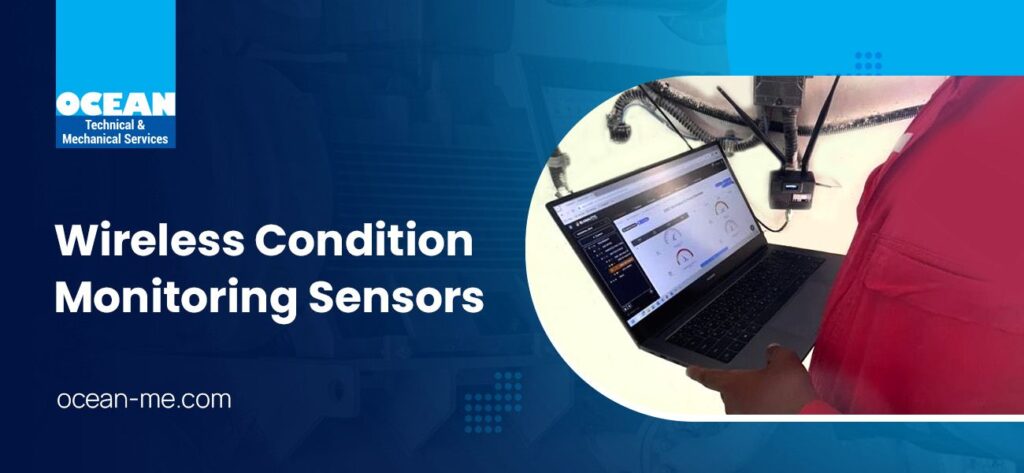Our Services
Infrared Thermography
Infrared Thermography Services
Infrared Thermography Testing, also known as thermal imaging or infrared imaging, is a Non-Destructive Testing (NDT) technique. It is used to detect and visualise temperature variations on the surface of an object or material, in electrical and mechanical components. Ocean Technical and Mechanical Services LLC uses skilled analysts from ITC (Infrared Training Center) Sweden to conduct infrared thermography testing for the specific industry. This remote sensing technology ensures the safety of employees while preserving machine functionality, providing valuable insights without disruption.
Our team of highly educated and experienced professionals carefully analyses thermograms to find hotspots, heat loss, leaks, insulation issues, and other imperfections in equipment that remain unseen by the human eye. The thermal imaging technology from OceanMe stands as a reliable, cost-efficient, and effective method for preemptively identifying potential hazards. We enable our clients to maintain uninterrupted facility operations, thereby circumventing unforeseen downtime as well as maintenance costs.
What is Thermography Testing?
Thermography or thermal imaging detects heating concentrations or heat leak sources in electrical equipment. Thus, thermography detects infrared energy emitted by an electrical circuit or an electrical part through which an electrical current passes (wire, cable, transformer, contactor, electrical motor, breaker, etc.). It involves using infrared cameras or thermal imaging devices to capture the infrared radiation emitted by an object and convert it into a visible image, known as a thermogram.
The infrared camera is pointed at the object or material being inspected, and thermal images are captured. These images display temperature variations across the surface, with different colours or shades representing different temperatures. By interpreting thermal asymmetries, OceanMe can anticipate errors, pinpoint their root causes, and address the issues, thus preventing potential system failures or performance issues for the plant.
Applications of Infrared Thermography Testing at Oceanme
- Electrical Inspections: To identify overheating components, loose connections, and other issues that may lead to equipment failure or electrical fires.
- Mechanical Inspections: For inspecting mechanical equipment such as motors, bearings, pumps, and conveyor belts.
- Building/Construction Inspections: To assess the thermal performance of structures, detect insulation deficiencies, identify moisture intrusion, and locate air leaks.
- HVAC System Inspections: To identify issues such as blocked vents, leaking ducts, and malfunctioning components.
- Industrial Process Monitoring: To detect abnormal temperature variations, leaks, or blockages in pipelines, reactors, furnaces, and other equipment.
- Predictive Maintenance: For the early detection of equipment failures and the scheduling of proactive repairs or replacements.
Thermography Testing Procedure
The procedure for conducting infrared thermography testing typically involves several key steps to ensure accurate and reliable results. Here’s a general outline of the procedure:
- Preparation: Define objectives, identify areas to inspect, ensure equipment readiness, and address safety concerns.
- Equipment Setup: Configure and calibrate the infrared camera, stabilise it, and record environmental conditions.
- Image Capture: Position the camera, and capture thermal images of the target area, ensuring full coverage.
- Analysis: Review thermal images, identify temperature anomalies, compare to standards, and document findings.
- Reporting: Compile a detailed report with thermal images, analysis results, and recommendations.
Follow-Up: Implement recommended actions and schedule regular inspections for ongoing condition-based maintenance.
Benefits of Infrared Thermography Testing
These benefits highlight the importance of thermography as a valuable tool for maintaining the reliability, safety, and efficiency of electrical and mechanical systems in various industries.
- Early problem detection: Identifying issues before they escalate.
- Preventive maintenance: Reducing unexpected breakdowns.
- Enhanced safety: Reducing risks to personnel.
- Cost savings: Minimising repair expenses.
- Efficient inspection: Quick assessment of large areas.
- Non-destructive testing: Preserving equipment integrity.
- Cost-effective: Efficient use of resources and minimising maintenance expenses.
Why Choose Ocean's Infrared Thermography Services?
If you’re looking for the best infrared thermography service in Oman to conduct regular inspections and make the most out of your surveys, OceanMe is your go-to choice. Being The leading Engineering Company in Oman, OceanMe offers a range of exceptional services tailored to various sectors.
Our team of authorised and experienced professionals can identify unusual temperature patterns and determine their root causes. This helps us to quickly spot any flaws or issues that may arise, allowing us to provide long-term solutions through our condition monitoring services like vibration analysis, ODS analysis, laser shaft alignment services etc. One of the key benefits of our infrared thermography services is that they are non-contact and non-invasive. This means that we can detect potential problems without the need for physical contact with the equipment or structure being inspected.
With over a decade of expertise in this field, OceanMe has established itself as the leading provider of trustworthy, accurate, and cost-effective thermal imaging services in Oman.





